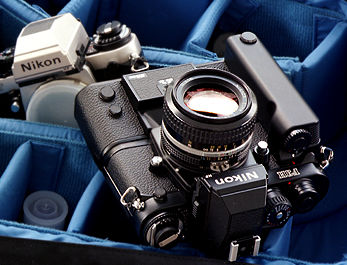 |
I am not sure how many of you have experience in handling a camera with pellicle mirror. Personally, I would strongly think pellicle mirror technology could be the key to resolve limitations on future cameras high speed film advance (10-15 fps). |
The flip-up and down movement of the main reflex mirror has always been the limiting factor to enable general camera models to realize high speed camera operations. Since there is no black out during the exact moment of exposure (You have to see how wonderful it will work in a multiple flash setup..). Beside these, it has other advantages such as there will be absolutely no mirror movement for high magnification or astro, or super-telephotography, where minimal vibration is one of the key factors for high quality images to be obtained. But among all its positive offerings, the most practical aspect of employing a still reflex mirror is with its potential to make high speed film advance a reality in entry level camera models. Both Nikon and Canon have been experimenting other potential applications of pellicle mirror in their few modern SLR camera designs.
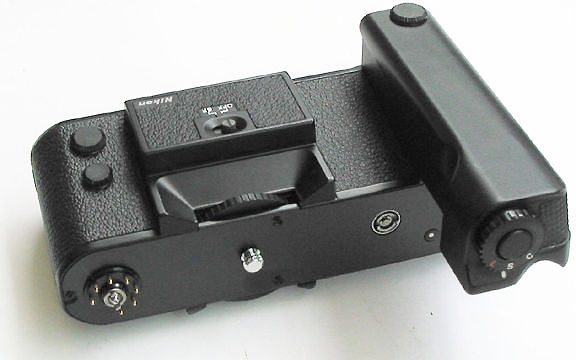 |
Despite Nikon's edge in its early days with the respective Nikon F High Speed Motor Camera and the F2 High Speed Motor Camera (1978), those two bodies were not commercial models and remained as limited edition units. On the other hand, Nikon's main rival Canon was more aggressive and they brought 5,000 units of the midrange Canon EOS RT (Marketed in October 1989, barely a month after they introduced the EOS-1) which incorporated a Pellicle Mirror to test the market and it was quite well received. |
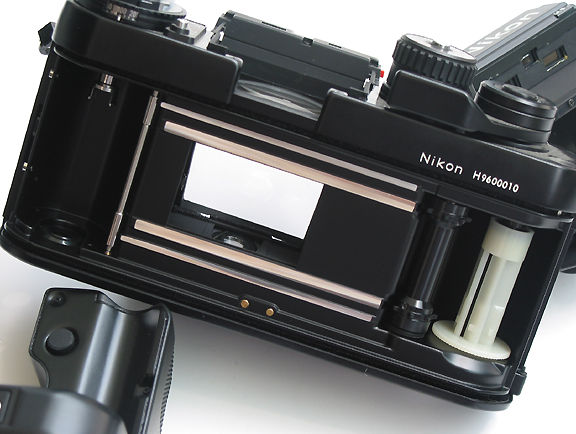 |
Some sites and links that could be helpful for you to understand cameras of Nikon & from other makers: Nikon F High Speed and F2 High Speed Motor Drive Camera; Canon F-1 High Speed (1972); New Canon F-1 High Speed camera (1984).
Exposure modes and shooting methods
As the lens aperture is not linked to the exposure meter on the camera body, be sure to perform stop-down exposure measurement in both automatic exposure (aperture-priority auto exposure) mode and manual exposure mode, perform stop-down exposure measurement when shooting as instructed at below. (ALSO see Earlier section explaining: WHY ? ) |
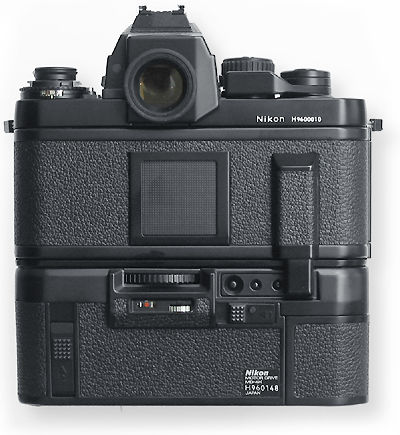 |
For lenses with automatic diaphragms: In auto exposure mode: Rotate the lens aperture ring to select the desired aperture, then release the shutter to take the picture. In manual exposure mode: Rotate the shutter speed dial and lens aperture ring to determine correct exposure, then release the shutter to take the picture. |
Important: As a fixed-type
translucent half mirror (Pellicle mirror) is built into this camera, exposure compensation
adjustment is required when using an external exposure meter (simply overexpose by
approximately 2/3 step).
Continuous
flash firing: When shooting continuously with a Nikon dedicated Speedlight, the
available number of flashes is roughly 30% less than the figure given in the instruction
manual provided with each speedlight. You may refer to the various Flash units section available for Nikon
F3 cameras for other info.
Backup mechanical release lever: This
lever cannot be used when operating the F3H camera body with the Motor Drive
MD-4H.
Wind the film advance lever fully if you use this lever.
Optional accessories: Many common accessories are compatible with those designed for the normal Nikon F3 High-Eyepoint camera and as well as the MD-4 motor drive )
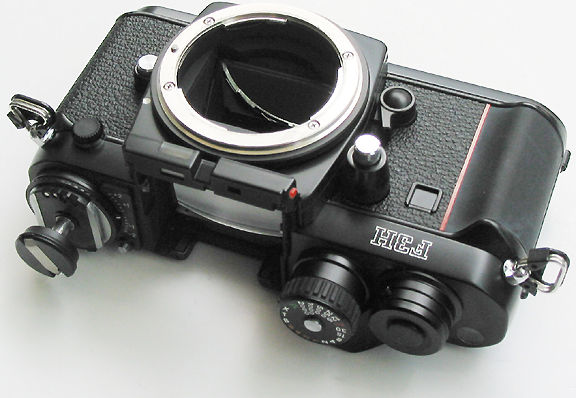 |
Important: Since the F3H and MD-4H are specially designed body for specific task, there are some areas where incompatibilities when used with certain accessories primarily designed for the normal F3 camera and Motor drive unit, MD-4. The following accessories listed below are NOT compatible with the F3H camera body and Motor Drive MD-4H combination. |
Picture was from my Copyright-free © Images Collection, 2003. leofoo ®
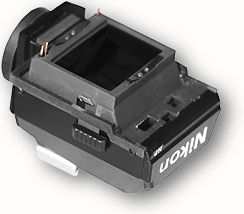 |
|
Specifications: High-speed Motor Drive MD-4H
Firing rates: Approx. 13 Frames per second at shutter speed of 1/1000 sec. (with NiCd Battery Unit MN-2, fully charged, with up to approx. 15 rolls of film). (Compared it with Specification of MD-4 Unit).Battery life: Approx. 70 rolls of 36-exposure film (at normal temperature) using NiCd Battery Unit MN-2. Approx. 140 rolls of 36-exposure film (at normal temperature) using AA-type alkaline-manganese Batteries.
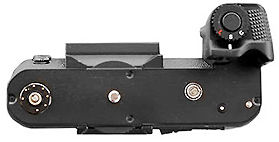 |
Weight: Approx. 500g (17.6 oz.) (without batteries) |
|
|
| | | Back to Index of Nikon F3 Models Back to Pictorial History of Nikon SLRs |
|
|||||
|
|||||||
Other
Nikon F3 Variants
| Back |
to F3
(1980-1982)
| Back to Index Page of F3H site |
| Back | to Pictorial History of Nikon SLR / rangefinders / Nikonos / digital cameras.
|
About this photographic site |
Contributions and Credits |
| Home - Photography in Malaysia |